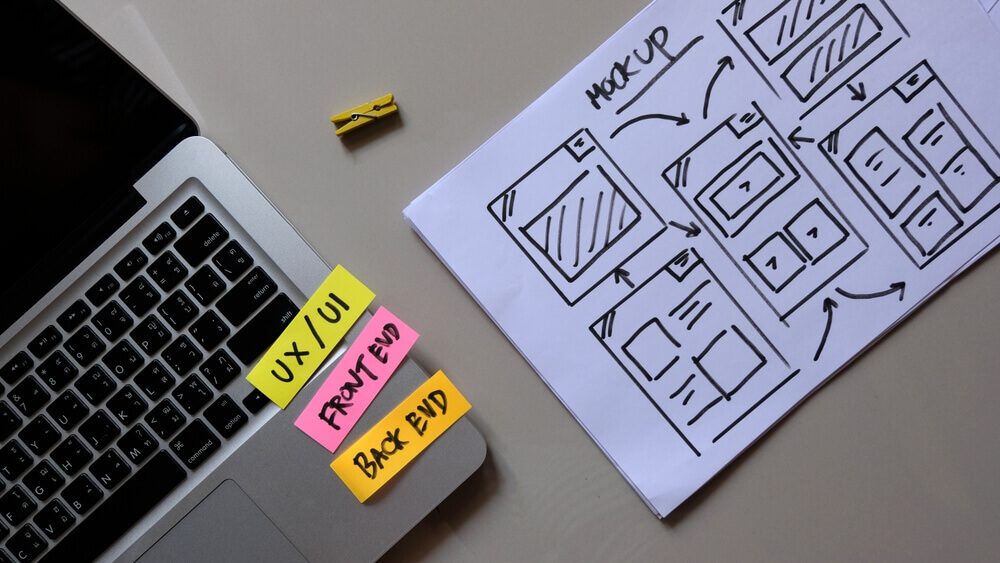
Great UX Flow Diagrams: Why You Need Them, How To Make Them
Understanding user experience (UX) is critical to designing products, services, and websites. With a clear idea of UX, businesses and organizations can optimize their offers and websites to fit their users' needs.
One way to understand UX is through user flow diagrams or customer journey maps. These are visual representations of users' steps and interactions while using a product or service. This guide focuses on:
- Why marketers need UX flow diagrams.
- How to make UX flow diagrams.
A top-notch San Diego UX design agency is your answer to creating the best UX design. Let’s go!
To learn how Digital Authority Partners can create a standout website for you, watch this video!
Why You Need UX Flow Diagrams
UX flow diagrams help designers understand and improve the user experience. They enable teams to identify potential bottlenecks, gaps, or usability issues, which is critical during the early steps in the design process. Here are more reasons to use UX flow maps:
- Visualize User Journeys. Designers easily see the entire flow and identify the various touchpoints, steps, and interactions involved in the UX.
- Identify Pain Points. Designers can quickly focus on improving issues through a UX flow diagram and enhance overall user experience.
- Understand User Paths and Choices. Show users' different paths and decision points within a product or service. This enables designers to better understand user behavior, preferences, and the influence of design decisions and new digital design trends.
- Enhance Usability and Efficiency. Optimize the flow to improve usability and efficiency, streamline the user journey, reduce unnecessary steps, and make interactions more intuitive and efficient.
- Align Stakeholders. Represent how users experience the product or service at various stages to help stakeholders understand the user journey. This is important, especially when using graphic and digital designers for web design.
How To Make UX Flow Diagrams

Creating UX flow diagrams is a step-by-step process. Like any strategy, it starts by defining the scope and purpose of the diagram.
1. Define the Scope
Determine the scope and purpose of the flow diagram. Understand the user journey, process, or task marketers want to visualize. This could be an end-to-end user flow or a specific user experience segment. Here are some tips to determine the scope and purpose of a flow diagram:
- Identify the target user persona or user segment.
- Focus on a specific task or series of steps essential for the user's interaction with the product or service.
- Consider the context in which the user journey or process takes place by identifying relevant touchpoints, devices, platforms, or channels involved in the UX.
- Define the objective or goal of the flow diagram, such as identifying usability issues, optimizing the user flow, or communicating the UX to stakeholders.
- Strike a balance between providing sufficient detail and keeping the flow diagram clear and understandable.
2. Identify User Goals
Understand the goals and objectives of the user within the chosen scope. Identify exactly what the user wants to achieve, including the main tasks in reaching these goals. These top techniques can help you understand the goals and objectives of the user.
- Conduct user research to gain insights into the target users' goals, motivations, and needs using user interviews, surveys, or observational studies.
- Create user personas representing your target users' characteristics, goals, and behaviors.
- Analyze user feedback, support requests, and other relevant data sources to identify common user goals and objectives.
- Collaborate with stakeholders with insights into user objectives, including customer support teams, sales representatives, or product managers who interact directly with users.
- Perform task analysis to break down the user journey or process into specific tasks and sub-tasks. This helps identify users' objectives at each stage and understand their goals.
3. Map User Steps
Break down the user journey into discrete steps. Begin from the initial trigger point and map each action or decision, including inputs, outputs, and branching paths. Build user maps using these tips.
- Start by identifying the ultimate end goal that the user wants to achieve within the journey.
- Divide the user journey into high-level phases or stages for significant milestones or transitions. The steps of an ecommerce journey could include product search, selection, checkout, payment, or order confirmation.
- Identify key actions or decisions crucial for progressing through the journey. Key actions for the product search phase could include entering search terms, filtering results, and clicking on product listings.
- Break down each key action or decision into specific user tasks and interactions. Read product descriptions, view product images, and add items to the shopping cart during product selection.
- Define the entry and exit points for each step or interaction to establish the flow and sequence of the steps.
4. Visualize Flow
Include flowchart symbols and arrows to represent the flow of the user's journey. Use arrows to indicate the direction of the flow, and insert symbols (such as rectangles, diamonds, or circles) for the different steps or decision points. Note these techniques to effectively visualize the flow.
- Ensure consistency in the formatting and styling of your flow visualization. Use the same shapes, line thickness, colors, and fonts throughout the diagram.
- Organize the flow sequentially, following the natural progression of the user journey.
- Strategically use color to differentiate elements, highlight important information, or indicate specific actions or outcomes.
- Provide clear labels for each step or action within the flow diagram.
- Consider the flow diagram direction to represent the intended flow direction of the user journey. Use arrows or directional indicators to indicate the progression.
5. Include Decision Points and Branching Paths
Decision points are places where users have multiple choices or paths to follow. In a flow diagram, branches or multiple arrows represent decision points and indicate the various paths available for the user. Use these best practices when including decision points in creating UX flow diagrams:
- Label decision points to indicate where users have choices or alternative paths to take.
- Use visual cues such as branches, diverging arrows, or lines to represent branching paths resulting from decision points.
- Show the consequences or outcomes of each decision point in the user flow.
- When applicable, consider incorporating conditional logic into the user flow to capture more complex decision-making processes and user interactions.
- Provide additional annotations or explanations to clarify the implications of different choices.
6. Validate and Iterate
Share the flow diagram with stakeholders, users, or other designers for feedback and validation. Improve the flow diagram based on the feedback received, making adjustments to enhance accuracy and clarity. Here are techniques for validating and iterating UX research:
- Conduct user testing sessions to gather feedback directly from users to identify usability issues, uncover areas for improvement, and validate design decisions.
- Perform formal usability studies by employing established metrics to measure user performance, such as task completion rates, time on task, and error rates.
- Provide interviews and surveys to gather qualitative feedback from users to provide insights into satisfaction, pain points, and potential areas for improvement.
- Implement A/B testing to compare different versions of your design or specific features.
- Seek input from UX experts or colleagues who specialize in UX design.
- Embrace an iterative design process, continuously refining and improving the design based on feedback and data.
7. Use Design Tools
Design tools enhance the UX design process. Choose from flowchart software, diagramming tools, or graphic design software to create professional-looking UX flow diagrams. These tools have pre-designed shapes, templates, and collaboration features to streamline the diagram creation process. Here are some well-known design tools that experts use:
- Adobe Creative Cloud is a comprehensive suite of design tools, including Photoshop, Illustrator, XD, InDesign, and more, with a wide range of features for graphic design, photo editing, illustration, user interface (UI), and user experience (UX) design.
- Sketch is a popular vector-based design tool tailored for UI and UX design. It offers a streamlined interface, powerful prototyping features, and an active plugin ecosystem.
- Figma is a cloud-based design tool that allows real-time collaboration, making it highly suitable for remote teams. It has powerful vector editing, prototyping, and design system management features.
- InVision is a prototyping and collaboration platform for creating interactive and animated prototypes. It has features for creating and sharing design mockups, conducting user testing, and gathering feedback.
Summing Up
UX flow diagrams should be clear, understandable, and accurately represent the user journey. These serve as a reference for design decisions, collaboration, and optimization, assisting designers in creating a seamless and intuitive user experience.
Find out more about how amazing user designs can improve UX. Contact Digital Authority Partners (DAP) for the latest in San Diego UX design.
Want To Meet Our Expert Team?
Book a meeting directly here




